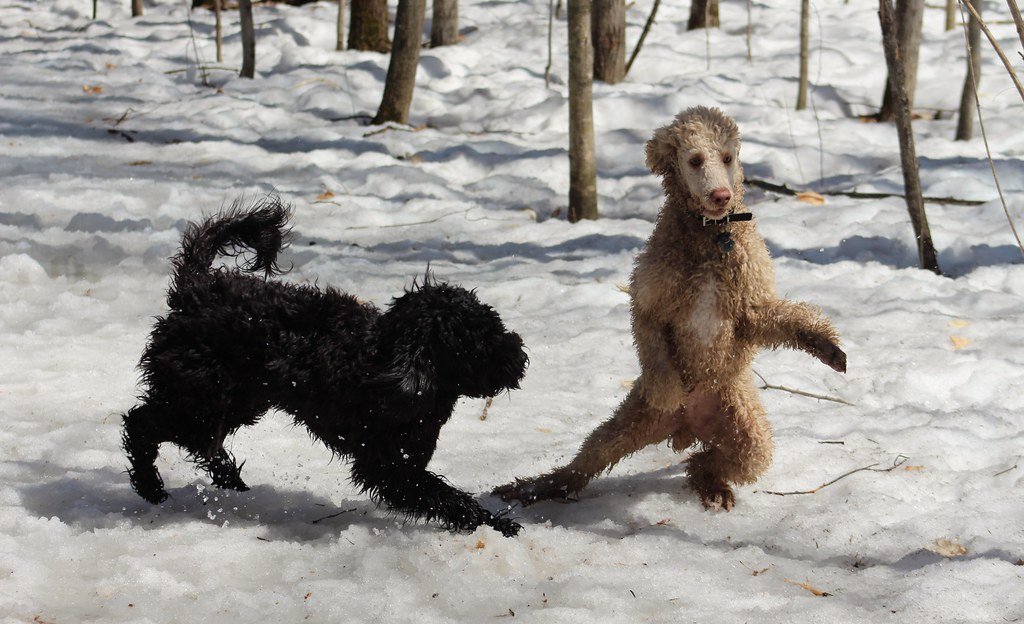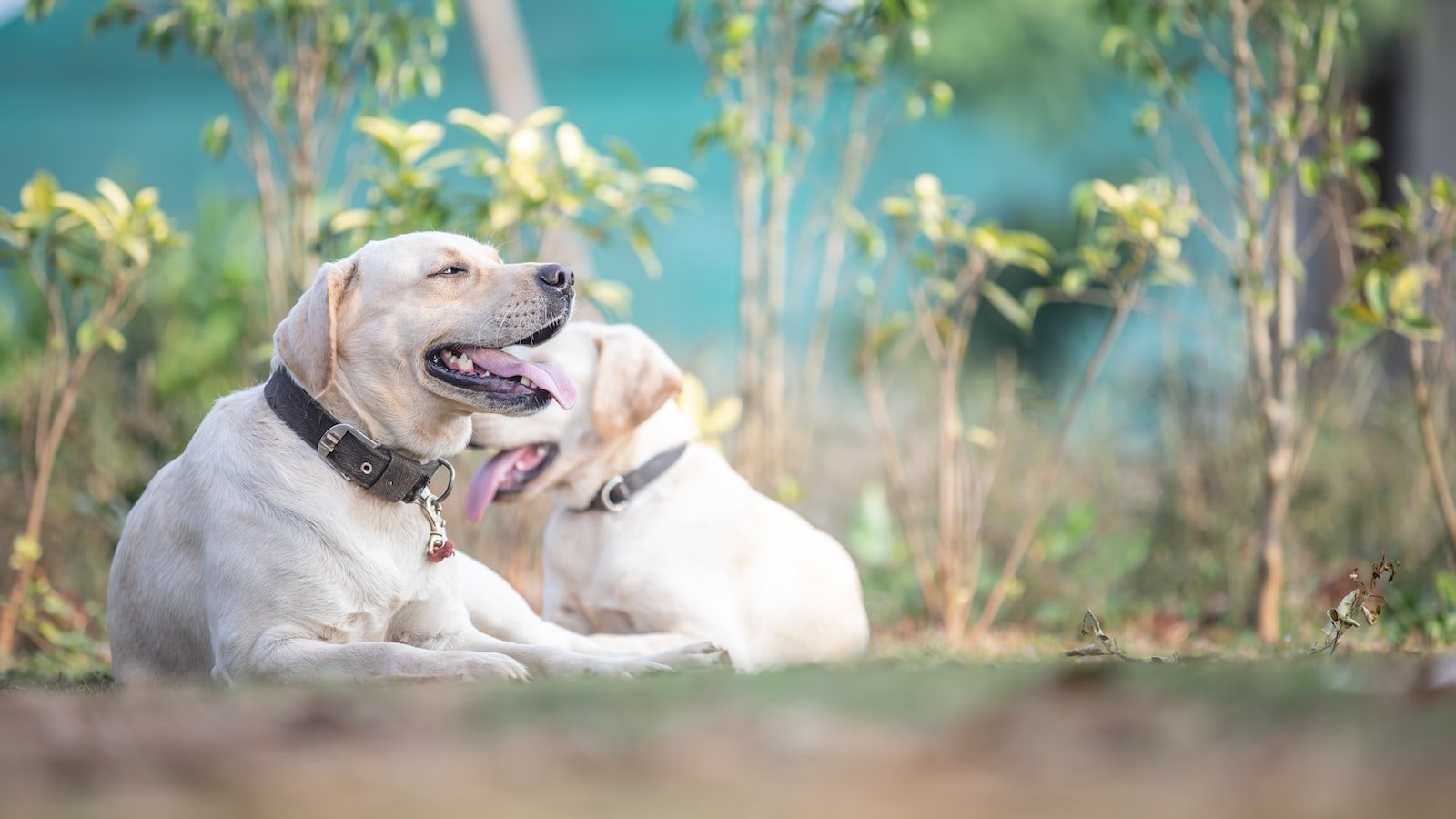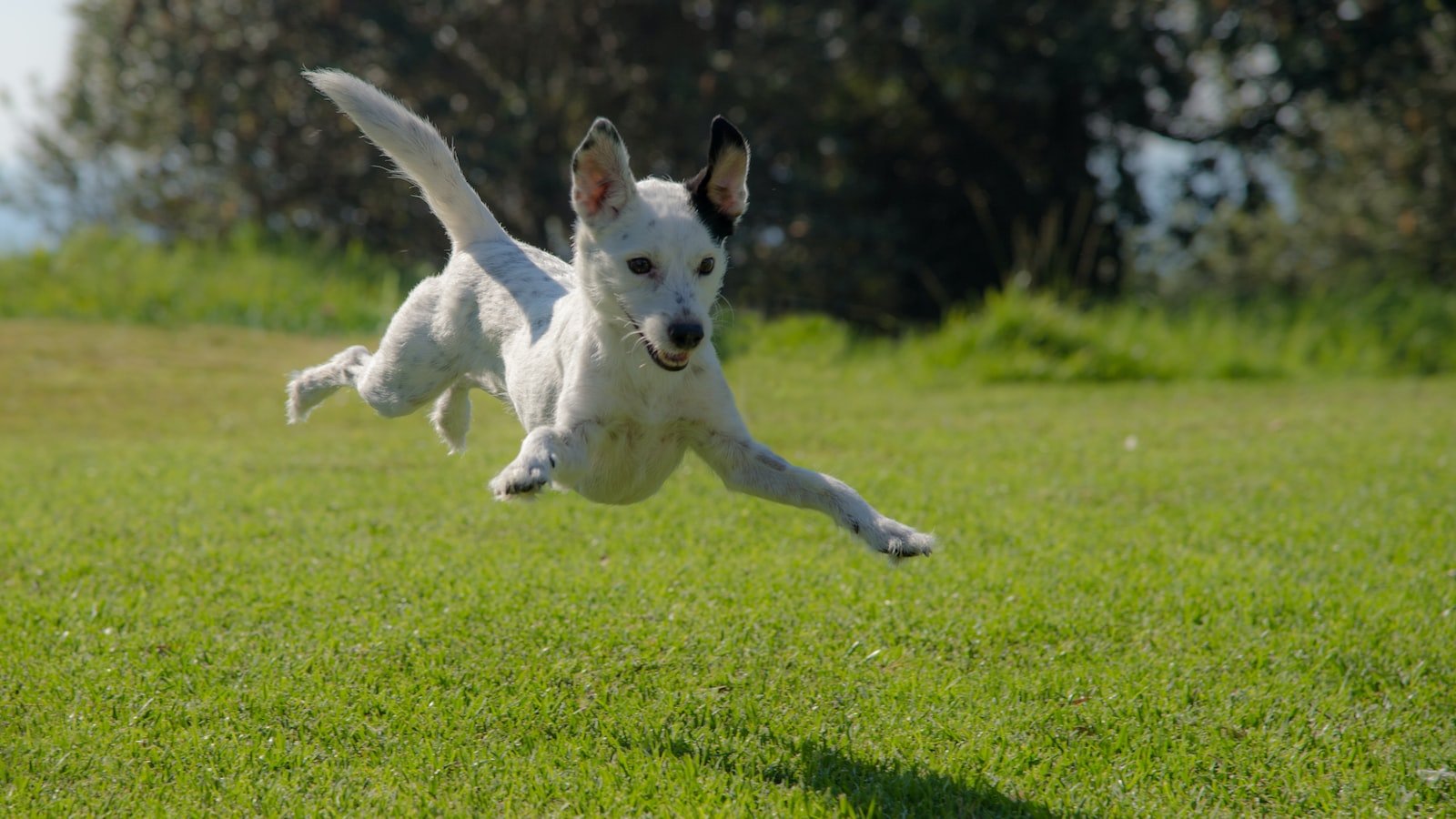The dance floor is no longer reserved solely for human beings twirling and swirling to the rhythm of music; now, dogs have gracefully bounded their way into this enchanting world of movement. Dog dancing, a delightful blend of obedience training and rhythmic choreography, has taken the canine world by storm. With their four paws tapping in perfect synchrony to the melodies, these talented and dedicated pooches have mesmerized audiences worldwide. But how does one train a dog to become a dancing maestro? In this article, we will uncover the secrets, tips, and tricks of the captivating world of dog dancing, revealing the astonishing bond that forms between a human and their furry partner on the dance floor.
Table of Contents
- Finding the Perfect Canine Dance Partner: Breed Selection and Qualities to Look For
- Mastering the Basics: Essential Commands and Foundation Skills for Dog Dancing
- Creating a Dance Routine: Choreography Tips and Techniques for Effective Performance
- Fine-tuning Your Dog’s Dance Skills: Training Methods and Techniques for Precision and Style
- Perfecting the Performance: Polishing your Dog’s Dance Routine with Showmanship and Expression
- Q&A
- Key Takeaways

Finding the Perfect Canine Dance Partner: Breed Selection and Qualities to Look For
When it comes to canine dance, finding the perfect partner is crucial. Before you start browsing through endless dog breed profiles, it’s important to know what qualities to look for in a dance partner. Not all breeds are well-suited for the intricate moves and precision required in this unique form of performance art.
Here are some qualities to consider when selecting the ideal breed for canine dance:
- Agility: Look for breeds that are inherently agile and have excellent coordination. Dogs with a natural inclination for quick movements and gracefulness will have a higher chance of mastering complex dance routines.
- Trainability: An obedient and eager-to-please temperament is essential for success in canine dance. Breeds that are highly trainable and quick learners will adapt more easily to learning new dance steps and following choreography.
- Physical Fitness: Dancing requires endurance and physical stamina. Consider breeds with robust health, good muscle tone, and sufficient energy levels to keep up with the demands of rehearsals and performances.
- Temperament: Dogs with a calm and friendly disposition tend to excel in canine dance. They are more likely to remain composed during performances and interactions with other dogs and handlers.
- Size and Structure: While size isn’t the only factor, it’s crucial to select a breed that has the right proportions and structure to execute dance movements elegantly. Breeds with medium to large size, well-balanced bodies, and long, flexible limbs are often well-suited for the art of canine dance.
Remember, the perfect canine dance partner is not just about breed characteristics; their individual personality, willingness to learn, and bond with their handler are also important factors. So take your time in selecting the ideal breed and ensure a harmonious partnership that will set the stage on fire!

Mastering the Basics: Essential Commands and Foundation Skills for Dog Dancing
When it comes to mastering the art of dog dancing, having a solid foundation of essential commands and skills is crucial. These basics not only provide a strong groundwork for your dog’s dancing journey but also ensure a harmonious partnership between you and your furry friend. Here are some key commands and skills that are vital to conquer in order to excel in the mesmerizing world of dog dancing:
1. Heel Work:
Heel work is the backbone of dog dancing. Training your dog to walk closely by your side, in perfect sync with your movements, is essential for creating mesmerizing routines. Start by teaching your dog the basic “heel” command, and gradually advance to more complex maneuvers, such as weaving in and out of your legs or walking backward while maintaining perfect alignment.
2. Paw Positions:
Paw positions are fundamental for creating stunning formations and intricate footwork in dog dancing. Teach your dog to lift and place each paw on your command, allowing you to guide them into various positions. With practice, you can create visually captivating moves that will leave the audience in awe.
3. Spin and Twirl:
To add a touch of flair and grace to your routines, mastering the art of spinning and twirling is a must. Train your dog to perform elegant spins and twirls on cue, both clockwise and counterclockwise. This skill not only adds a dazzling element to your performance but also showcases your dog’s exceptional coordination and control.
Remember, the journey to mastering these essential commands and foundation skills for dog dancing requires patience, dedication, and plenty of positive reinforcement. With consistent practice and a dash of creativity, you and your four-legged companion will be ready to embark on an enchanting adventure that will captivate audiences and bring joy to all who watch.

Creating a Dance Routine: Choreography Tips and Techniques for Effective Performance
Dance routines are the heart and soul of any memorable performance. To create an effective dance routine that leaves a lasting impact on your audience, it’s essential to focus on choreography tips and techniques. Here are some valuable insights to help you craft a remarkable dance routine:
- Start with a vision: Before diving into the choreography process, envision the overall concept and theme of your routine. This will serve as your guiding light and help you make cohesive artistic choices.
- Choose the right music: Music is the backbone of any dance routine. Select a song that resonates with your theme and inspires the desired emotions. Experiment with different genres and rhythms to find the perfect match.
- Utilize dynamics: Incorporate dynamic elements into your routine to add depth and variety. Play with changes in tempo, levels, and energy to create moments of surprise and captivate your audience.
- Focus on transitions: Smooth transitions between movements and formations can elevate the professionalism of your routine. Pay attention to the flow and connectivity between steps, seamlessly guiding your dancers from one captivating moment to the next.
- Harness the power of formations: Experiment with different formations to enhance the visual impact of your routine. Utilize diagonal lines, circles, zigzags, or any other creative shape that complements your theme and concept.
- Incorporate storytelling: Infuse your routine with storytelling elements to engage your audience on a deeper level. Use gestures, facial expressions, and synchronized movements to convey a narrative that resonates with both the dancers and spectators.
- Rehearsal is key: Dedicate ample time to rehearse your routine to perfection. Practice, refine, and polish every section, paying attention to synchronization, timing, and execution. The more familiar your dancers are with the routine, the more confident and impactful their performance will be.
By incorporating these choreography tips and techniques, you’ll be well on your way to creating a dance routine that dazzles your audience and leaves a lasting impression. Happy dancing!

Fine-tuning Your Dog’s Dance Skills: Training Methods and Techniques for Precision and Style
Dog dance has become an increasingly popular activity for dog owners who want to showcase their pet’s talents and bond through creative movement. To take your dog’s dance skills to the next level, it’s crucial to focus on precision and style. Here are some effective training methods and techniques that can help you achieve a seamless and impressive performance:
- Rhythmic Footwork: Teach your dog to synchronize their steps with the music by practicing various footwork patterns. Start with simple moves like side steps and pivots, gradually progressing to more intricate sequences. Rewarding correct foot placement and timing will ensure your dog stands out on the dance floor.
- Mirroring Movements: Develop a strong communication bond with your dog by teaching them to mirror your movements. This technique involves training your dog to mimic your dance steps, spins, and jumps. By doing so, you create a visually stunning performance where you and your dog move as one.
- Creative Styling: Incorporating stylish moves and props into your routine can elevate your dog’s dance performance to new heights. Experiment with unique tricks, spins, and leaps that showcase your dog’s agility and grace. Consider using colorful costumes or accessories that complement the theme of your performance.
Remember, patience and positive reinforcement are vital throughout the training process. With persistence and dedication, you and your dog can achieve a harmonious and captivating dance routine that will surely leave the audience in awe.
Perfecting the Performance: Polishing your Dog’s Dance Routine with Showmanship and Expression
When it comes to showcasing your dog’s dance routine, showmanship and expression play a crucial role in captivating the audience and leaving a lasting impression. It’s not just about executing the steps flawlessly; it’s about adding that extra touch of finesse that takes your performance to the next level. Here are some tips to help you polish your dog’s dance routine and make it truly mesmerizing:
- Start with a strong entrance: The first few seconds of your routine can set the stage for the entire performance. Consider adding an eye-catching move or a dramatic pose to grab the audience’s attention right from the start.
- Emphasize the storyline: Every dance routine tells a story, and your dog is the star. Use expressive movements and gestures to portray the emotions and narrative of your routine. This will not only make your performance more engaging but also make it easier for the audience to connect with your dog’s performance.
- Incorporate creative transitions: Transitions between different dance moves are often overlooked, but they can greatly enhance the overall flow and aesthetics of your routine. Experiment with unique and seamless transitions that add an element of surprise or elegance to keep your audience hooked.
- Add signature moves: A signature move is a memorable and distinctive element that sets your routine apart from others. Whether it’s a synchronized spin, a fancy jump, or a heartwarming interaction, incorporating a signature move or two will make your dog’s performance unforgettable.
Remember, perfecting your dog’s dance routine not only requires practice and precision but also the ability to captivate and engage through showmanship and expression. So, unleash your creativity, showcase your dog’s talent, and let their dance routine shine with impeccable style!
Q&A
What is dog dancing?
Dog dancing, also known as musical canine freestyle, is a sport that involves combining obedience commands, tricks, and dance moves into a choreographed routine performed by a handler and their dog. It showcases the bond between humans and their furry companions through synchronized movements and playful routines.
How can I start training my dog for dog dancing?
To start training your dog for dog dancing, begin with basic obedience commands like sit, stay, and heel. Gradually introduce new tricks and movements, rewarding your dog with treats and praise for their progress. Consistency, positive reinforcement, and patience are key to successfully train your dog for this delightful activity.
What are some important tips for dog dancing training?
When training your dog for dog dancing, it’s essential to keep training sessions short and fun, as dogs thrive on positive reinforcement and enjoy solving puzzles. Break down complex routines into smaller parts, and remember to celebrate small victories along the way. Practice in a distraction-free environment and gradually introduce more challenging settings as your dog progresses.
What are some common mistakes to avoid when training a dog for dog dancing?
One common mistake is expecting too much too soon. It’s important to have realistic expectations and be patient with your dog’s learning pace. Additionally, avoid using punishment or physical force during training, as it can hinder the bond between you and your dog. Instead, focus on positive reinforcement and building a strong, trust-based relationship.
What are some popular dog dance moves to include in a routine?
Popular dog dance moves include spins, weaves, jumps, paw lifts, and balancing acts. These moves can be combined with obedience commands and transitions to create dynamic and entertaining routines. Remember to tailor the moves to your dog’s physical abilities and always prioritize their safety and well-being.
Can any dog learn to dance?
Yes, any dog can learn to dance! While certain breeds may excel in specific styles or moves, all dogs can participate in dog dancing. As long as your dog is physically capable and enjoys learning and performing, they can become a passionate dancer.
Can I compete with my dog in dog dancing competitions?
Absolutely! Dog dancing competitions offer the perfect opportunity for you and your dog to showcase your skills and the bond you’ve built through training. These events often have different levels of competition based on the handler’s and dog’s experience, allowing everyone to participate and have fun while competing against similarly skilled teams.
Key Takeaways
As the curtains gracefully fall on our exploration into the captivating world of dog dancing, we hope that you’ve been enthralled by the wondrous tales of canine companions and their harmonious bond with their devoted dancers. Throughout this journey, we’ve delved into the secrets behind the mesmerizing routines and uncovered the training tips and tricks that turn ordinary pooches into dancing prodigies.
From syncing those tantalizing twirls to perfecting those paw-tapping steps, we’ve learned that dog dancing is indeed an art form that requires equal parts dedication, patience, and an unwavering love for our furry friends. As our paws would prance across the dance floor, we’ve learned that the key to success lies not in forceful commands, but in building trust, fostering a deep connection, and embracing the canine spirit of joyous play.
While we’ve explored the importance of positive reinforcement and the mighty benefits of clicker training, it is essential to remember that each dog possesses unique talents and temperaments. Just as no two dancers can perform a routine the same way, no two dogs will respond to training methods in identical fashion. The magical journey of dog dancing lies in the understanding, the communication, and the gentle guidance we offer our four-legged partners.
So as we conclude this enchanting chapter in the dance card of man’s best friend, we invite you, dear readers, to embark on your own voyage into the mesmerizing world of dog dancing. Whether it be through an exquisite pas de deux or a playful freestyle extravaganza, discover the power of dance to strengthen the bond between you and your loyal canine companion. Let patience be your dance partner, trust be your rhythm, and love be your guiding star.
In this captivating realm, as dogs twirl with elegance and humans swirl with laughter, we find that dog dancing is not merely a performance, but an expression of the deep-rooted friendship and immeasurable joy that exists between humans and their beloved pets. So go forth, fellow dance enthusiasts, and let the magical melody of Dog Dancing fill your hearts and homes with the enchantment that only a canine companion can bring.
As an affiliate, my content may feature links to products I personally use and recommend. By taking action, like subscribing or making a purchase, you’ll be supporting my work and fueling my taco cravings at the same time. Win-win, right?
Want to read more? Check out our Affiliate Disclosure page.